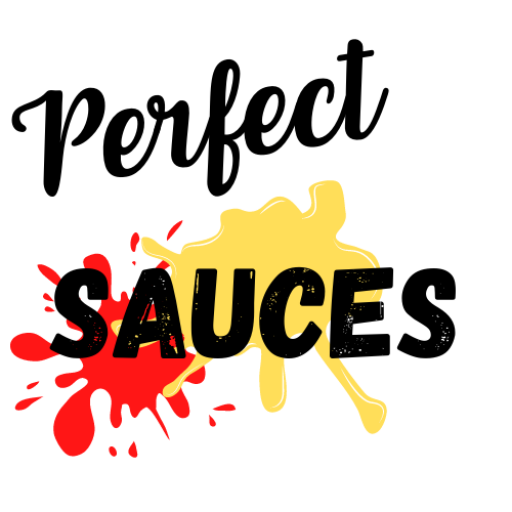Agave nectar is familiar to anyone with a penchant for sweets but striving for a healthy lifestyle. It’s perfect for certain Asian sauces, salad dressings, marinades, and cocktails. But what if you don’t stock this versatile sweetener? I’ve got you covered with the best agave nectar substitutes. You can substitute agave nectar for honey, maple syrup, light corn syrup, and a homemade version. But these aren’t all, so let’s discover some more swaps for agave nectar.
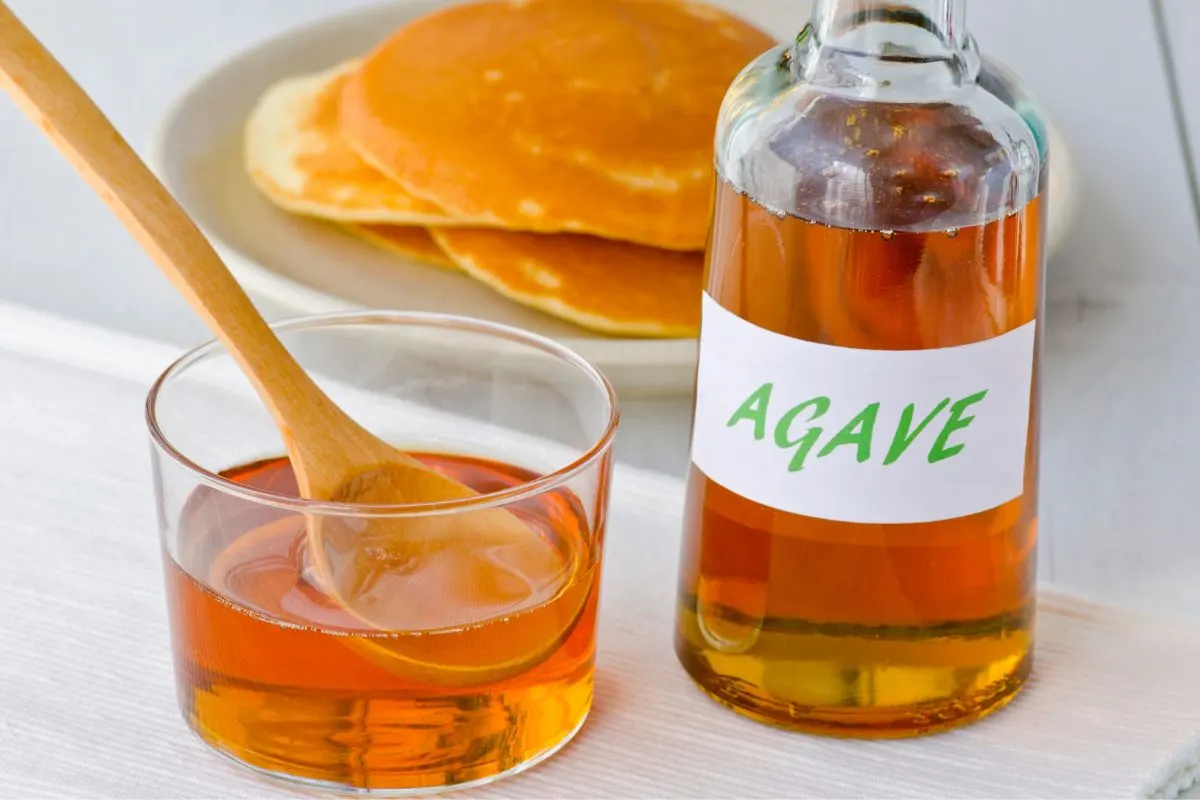
Jump To
🤷 What is Agave Nectar
Agave nectar is a natural sweetener that is derived from the sap of the agave plant. The plant is native to Mexico and is also grown in other parts of the world. The nectar is extracted from the core of the agave plant, which is then filtered, heated, and concentrated to create a syrup-like liquid. Agave nectar is commonly used as a sweetener in various food products, including baked goods, beverages, and even chicken sauces.
🧑⚕️ Is Agave Nectar Healthy?
Agave nectar is high in fructose, which can be harmful to the body in large amounts. So, while it does have some potential health benefits, such as a lower glycemic index and a sweeter taste than sugar, it should be consumed in moderation.
| Pros | Cons |
|---|---|
| Low glycemic index | High in fructose |
| Sweeter taste than sugar | Highly processed |
| Potential health benefits | Contains additives |
| Vegan-friendly | |
| Gluten-free |
🆚 Agave Nectar vs Honey
Agave nectar has a lower glycemic index than honey. It’s also sweeter than honey but is processed, which means it does lack the same level of nutritional benefits as raw honey, such as its antioxidants, enzymes, and trace amounts of vitamins and minerals. While honey has a more complex flavor profile influenced by the nectar of various flowers, agave nectar offers a milder taste.
📌 How to Use Agave Nectar
Agave is a natural sweetener with a unique flavor. Sweeter than sugar, with many similarities to honey, it’s perfect for vegans. Due to its ability to dissolve in a liquid more efficiently than other sweeteners, it’s a great substitute for simple syrup or honey in cold beverages or cocktails. Dark agave nectar is the best option for some classic breakfast treats like pancakes and waffles.
Here are some delicious recipes to try using agave nectar.
- Barbecue Roasted Chicken
- Classic Margarita
- Noodles with Crispy Tofu
- Granola
- Tapioca Rice Pudding
- Fruit Sorbet
- Lemon Drop Cocktail
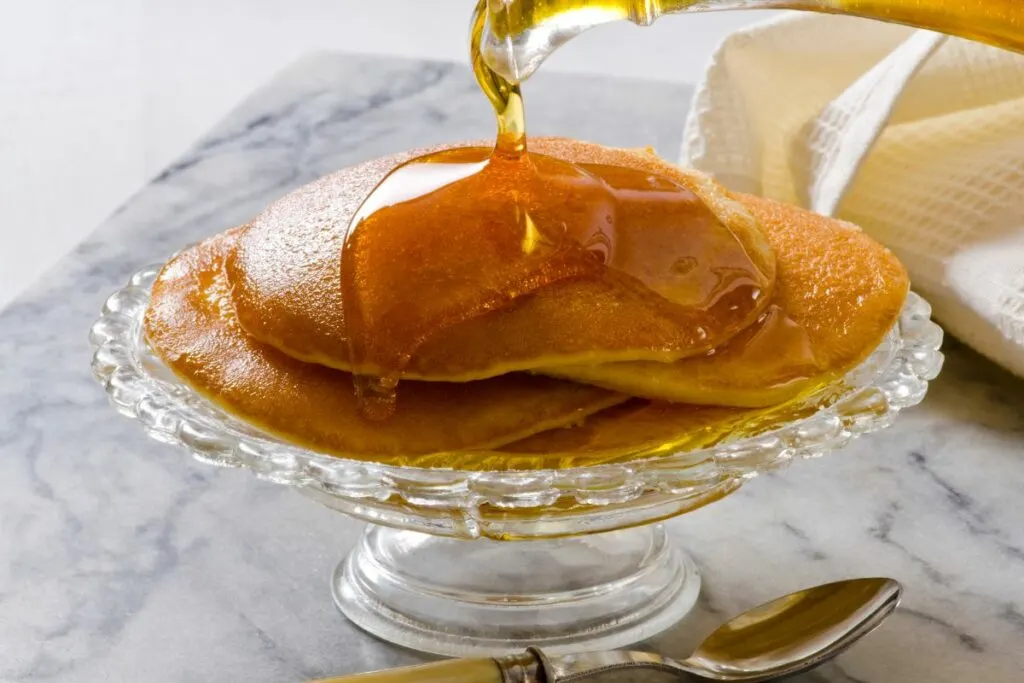
💡 7 Best Agave Nectar Substitutes
DIY Agave Nectar
When it comes to replacing agave in beverages, this DIY agave nectar is your best choice. Light brown sugar is the secret to this hack, as white sugar lacks the depth of sweetness. Don’t use dark brown sugar, as this has too-prominent molasses notes. Just mix together 2 parts brown sugar and 1 part water in a saucepan and bring to a boil, then substitute in a 1:1 ratio.
Honey
Honey is one of the easiest substitutes for agave. It has a similar sweetness and can easily be used in place of agave nectar in any recipe. It does have a thicker texture and different flavor than agave, with its sweet floral notes. This difference in taste will shift the overall flavor of your dish. But even though honey has a thicker consistency than agave nectar, it can be used as a 1:1 substitution.
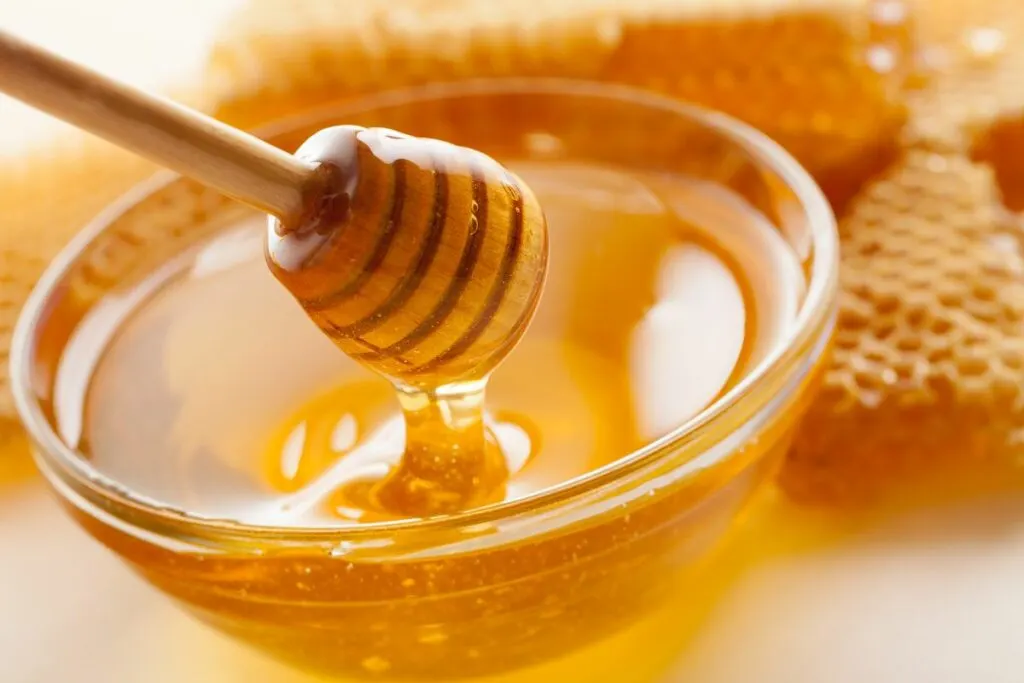
Simple Syrup
This is a household essential for most, so you’ll most likely have this agave nectar substitute yourself. With a neutral taste and similar consistency to agave, it’s really easy to use and make. All you need to make simple syrup is white sugar and water. Dissolve equal parts sugar and water in a pan until mixed thoroughly and then cook for several minutes until syrupy. It even has a long shelf life when stored properly in the fridge. It can be used in a 1:1 exchange, though you may need to add more.
Maple Syrup
Maple syrup is a pantry staple, especially in homes with pancake fans. Much like a maple extract substitute, this plant-based sweetener has a similar level of sweetness to agave but distinctive flavor. It won’t pair well with sauces, dressings, and marinades, so this substitute should be used with caution. Though it can make for a delicious porkchop sauce. This vegan-friendly option can be used in a 1:1 ratio, but if you don’t have any, you can use maple syrup substitutes.
Light Corn Syrup
Light corn syrup is sweeter than honey and maple syrup but comes close to agave’s natural sweetness. It’s a highly processed sweetener made from corn. Both light & regular corn syrups are popularly used for candy making because they’re sweeter than other sugars. Due to its level of sweetness and thicker consistency, it’s best used as a substitute in baking only. Use corn syrup at a 1:1 exchange.
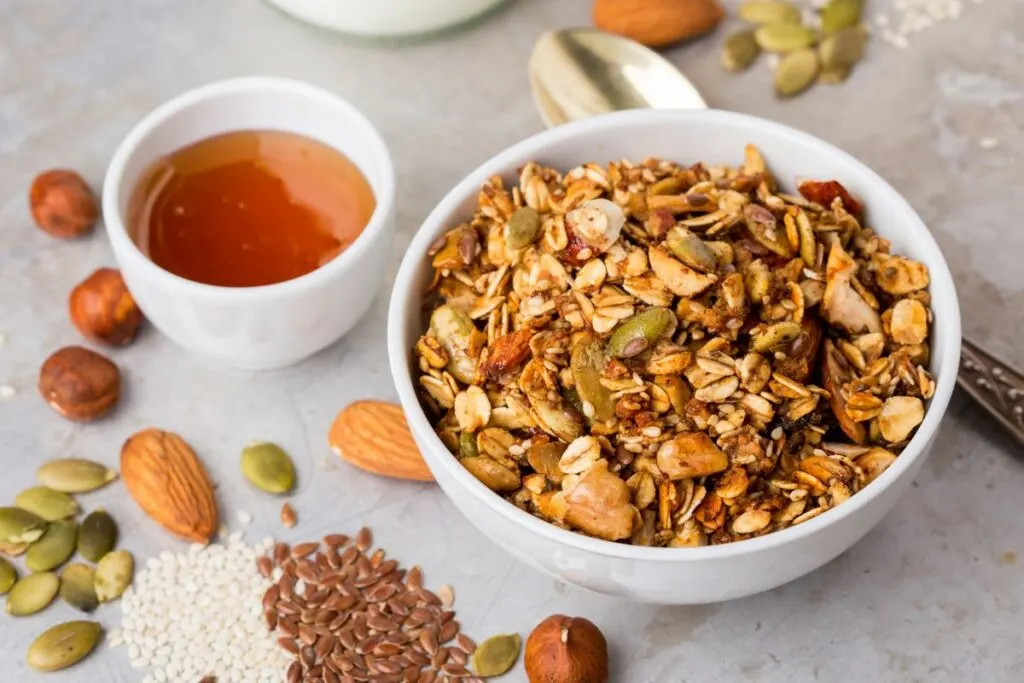
Brown Rice Syrup
This agave nectar substitute is a great low-sugar option to sweeten baked goods. Though not as common as sugar or honey, it’s a healthier and viable replacement for agave. It has a thinner consistency, similar to agave nectar, but much less sweet. For a similar sweetness, double the amount used in recipes. Start with a 2:1 ratio, then taste before adding any more.
Coconut Nectar
Coconut nectar has a similar consistency to agave nectar but is less sweet. It comes from the sap of coconut trees and has a prominent coconut flavor. It won’t work as a substitute in all recipes but does shine when used in baking. It can lend that light sweetness without overpowering the other ingredients, so use it in place of agave nectar in a 1:1 exchange.
🧐 FAQs
Agave nectar is created by boiling and processing sap from the agave plant (called maguey). It’s not fermented and thus has no alcohol. This plant, a kind of succulent that’s indigenous to Mexico, has been used in Central America for over a thousand years and recently gained popularity in the U.S. and Europe.
Honey is a great substitute for agave nectar in baking. It has a similar consistency and can be used as a 1:1 replacement. However, it is important to note that honey has a stronger flavor than agave nectar, so it may affect the overall taste of the baked goods.
Agave nectar has a mild, sweet flavor with a subtle hint of caramel. The flavor of agave nectar is often described as being similar to that of maple syrup or brown sugar.
Some alternatives to agave nectar that are suitable for diabetics include stevia, erythritol, and monk fruit sweetener.
